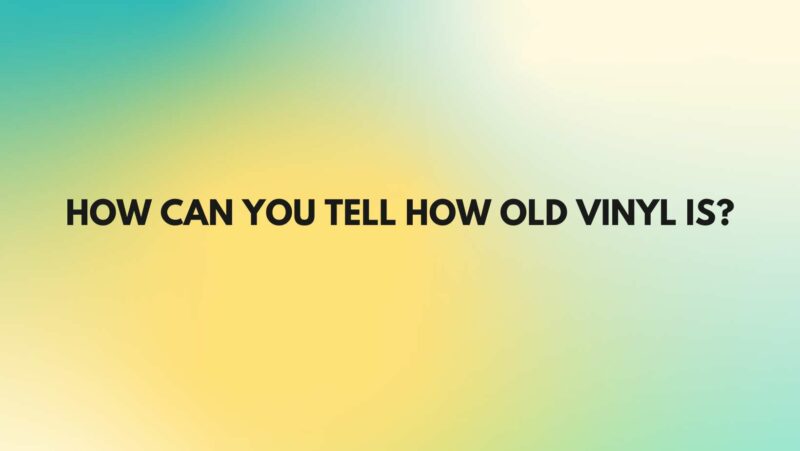Vinyl records have transcended time, enchanting audiophiles, collectors, and music enthusiasts for generations. If you’ve ever come across a vinyl record and wondered about its age, you’re not alone. Determining the age of a vinyl record can be a fascinating journey through music history. This comprehensive guide will walk you through the various methods and clues to help you unveil the age of vinyl records.
- Examine the Record Label
One of the most reliable ways to gauge the age of a vinyl record is by inspecting the label. Different eras and record labels used distinct designs and characteristics:
- Columbia Records (6-Eye and 2-Eye Labels): Records with the six red “eyes” or two red “eyes” on the label date back to the 1950s and 1960s, respectively. These labels are classic indicators of vintage vinyl.
- Blue Note Records: Known for its legendary jazz releases, Blue Note used a distinctive blue and white label. The design can vary slightly over the years, so consult a label guide for precise dating.
- Motown Records: Motown records from the 1960s and 1970s often feature a recognizable “map of Detroit” on the label.
- Capitol Records Rainbow Label: The rainbow-colored Capitol Records label was used in the 1960s and is a clear sign of a vintage release.
- Atlantic Records (Black Label): Atlantic Records used a black label with white printing in the 1950s and 1960s.
- Analyze Catalog Numbers
Each vinyl record has a unique catalog number, which provides valuable information about its release date. Catalog numbers can vary widely between record labels and even within labels, so understanding the specific numbering system used by the label is essential for accurate dating.
- Consider the Cover Artwork
The cover artwork of a vinyl record can also offer clues about its age. Different decades had distinct design trends:
- 1950s and 1960s: Early jazz and classical records often featured minimalistic cover designs with an emphasis on typography and simple graphics.
- 1970s: The disco era brought vibrant and colorful cover art, while punk and new wave records often featured bold, unconventional designs.
- 1980s: The 1980s saw a wide range of cover art styles, from sleek and futuristic to elaborate and artistic.
- Inspect the Vinyl’s Condition
The condition of a vinyl record can provide insights into its age and usage. Records that have been well-preserved tend to be older, while heavily used or damaged records might be newer but in poorer condition. Key factors to consider include:
- Surface Scratches: Light surface scratches are common on vintage records but typically don’t impact playability significantly. Deep scratches, however, can affect sound quality.
- Warps: Warped records may skip or have tracking issues when played on a turntable.
- Wear on the Cover: Excessive wear, tears, or writing on the cover can provide hints about the record’s age and usage history.
- Research the Artist and Release Date
If you have access to information about the artist and their discography, you can narrow down the age of a vinyl record by researching the release date of the album. Online databases and music history resources can be valuable tools in this process.
Conclusion
Determining the age of a vinyl record is like solving a musical mystery, combining elements of design analysis, catalog number research, and condition assessment. By mastering these methods and taking advantage of resources available online and in collector communities, you can unlock the hidden stories behind vintage vinyl records and gain a deeper appreciation for the timeless charm of analog music. Happy vinyl hunting!


